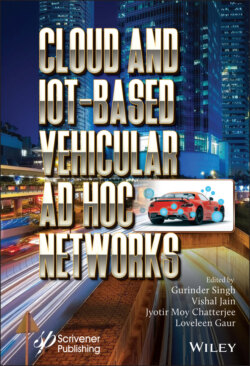Читать книгу Cloud and IoT-Based Vehicular Ad Hoc Networks - Группа авторов - Страница 14
1.1 Introduction
Оглавление“Internet of Things (IoT)” is termed as the network in which all our everyday objects are interconnected to each other, which mostly contains omnipresent information. IoT has proved his importance till now and seems a lot more promising in the coming future. It will enhance the omnipresence of the Internet by connecting the everyday objects for interaction via embedded or interconnected systems, which will eventually be leading to a highly diversified network of everyday devices interconnected to each other and communicating with human beings as well as other devices. Due to the fast and immense growth in the technologies, IoT is opening a great a lot of immense opportunities for a vast number of novel applications with promises to better the quality of our lives. Lately, IoT has increased much consideration from specialists and experts from around the world. The term “Internet-of-Things” is used as an umbrella keyword for covering the various aspects which are related to the vast expansion of the Internet and the Web into the physical space, by methods for the broad arrangement of spatially appropriated gadgets with implanted distinguishing proof, reasonableness and additionally activation capacities. “Internet-of-Things” envisions a future where advanced and physical elements can be related, through fitting data and correspondence innovations, to empower an entire present day division of uses and administrations. Internet of Things has demonstrated a promising chance to manufacture ground-breaking frameworks and applications by utilizing the developing omnipresence of radio-recurrence recognizable proof (RFID), and sensor gadgets, and remote, portable. Nowadays, the dominant form of communication on the Internet is human to human. In any case, it is predictable that in a close soon that any article will have an extraordinary method for ID and can be tended to with the goal that each item can be associated. The intercommunication forms will expand from human–human to human–human, human–thing and thing–thing (also known as M2M).
5th Generation Technology has changed by what method the customer utilizes the phones with high data transfer capacity. Innovation represents the 5th Generation Mobile Technology. The present “5G” advances are using CDMA, BDMA and millimeter remote that empowers seed is which is more than 100 Mbps and at full mobility. It can get significantly higher than 1 Gbps at low mobility. It is a packet-switched wireless system with high connectivity and comprehensive area coverage. There are all types of advanced features of the “5G” technology which makes it huge in demand and most powerful shortly. It provides the user of mobile phones more efficiency and also provides a whole bunch of features. It is entering into the future where you see in that there is a bunch of power which is hooked into the small devices and keeping in mind that “5G” technology is integrated into little devices like the smartphones of a user. There has been a massive change in the wireless communications field over the most recent couple of decades because of science and innovation. We, humans, cannot expect a single moment with the cellular network on our cellphone. It has become so addictive to humans that even before “5G”, there were many high bandwidth plans available for us, not in the cell phones but for the personal home Wi-Fi, etc. We have distinctive portable and remote correspondence advancements, which are mass conveyed, “for example, WiMAX (IEEE 802.16 remote and versatile systems), Wi-Fi (IEEE 802.11 remote systems), LTE (Long Term Evolution), 3G versatile systems (UMTS, cdma2000) and 4G just as going with the systems, individual territory systems (Bluetooth, ZigBee) or sensor systems. These advancements (basically cell ages) contrast from one another dependent on four fundamental angles: radio access, information rates, data transmission and exchange plans. These distinctions have been seen in past ages (1G, 2G, 2.”5G” and 3G and others). In understanding, we have been investigated the “5G” network the most developed cellular innovation”.
